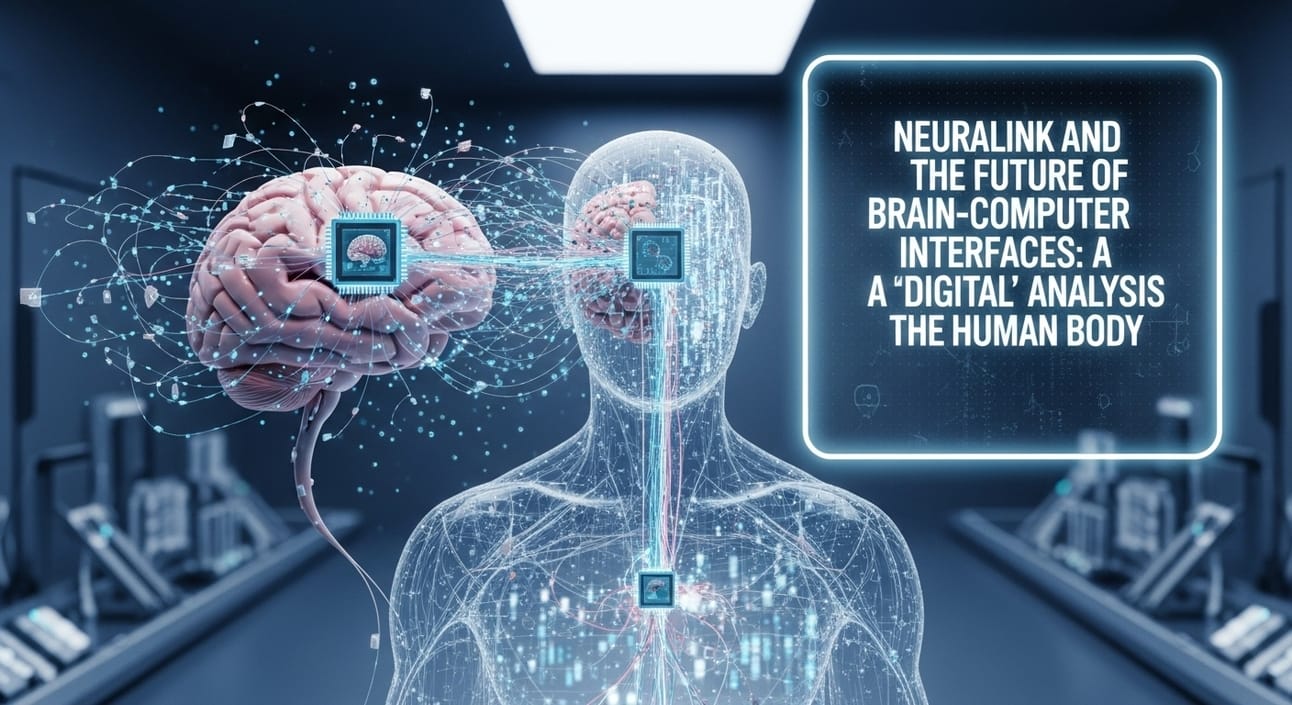- Digital Brain
- Posts
- Neuralink and the Future of Brain-Computer Interfaces: A 'Digital Brain' Analysis of the Human Body
Neuralink and the Future of Brain-Computer Interfaces: A 'Digital Brain' Analysis of the Human Body

Hello, Digital Brain reader!
We've journeyed through the vast landscapes of AI, from its multimodal capabilities and decision-making prowess to the profound philosophical questions of digital consciousness. Today, we turn our gaze inward, exploring a frontier where technology meets biology in the most intimate way: Brain-Computer Interfaces (BCIs). Specifically, we'll delve into the work of companies like Neuralink and what these advancements mean for the future of human-machine interaction, truly making the human body a canvas for the "Digital Brain."
What Are Brain-Computer Interfaces (BCIs)?
At its core, a BCI is a direct communication pathway between an enhanced or wired brain and an external device. It allows signals from the brain to control external hardware, or vice versa, enabling direct interaction without the need for traditional input methods like keyboards or mice. While the concept might sound like science fiction, BCIs have been a subject of serious research for decades, primarily for medical applications.
Neuralink: Pushing the Boundaries
Founded by Elon Musk, Neuralink is perhaps the most prominent player in the BCI space, known for its ambitious goal of creating ultra-high bandwidth BCIs to connect humans and computers. Their approach involves implanting tiny, flexible threads containing thousands of electrodes directly into the brain, capable of reading neural activity and potentially writing information back.
Recent demonstrations by Neuralink have shown promising results, particularly in restoring function for individuals with severe neurological conditions. For example, a quadriplegic patient was able to control a computer cursor and play video games using only his thoughts, a monumental step towards restoring independence and communication for those with paralysis.
Current and Future Applications: From Therapy to Enhancement
The potential applications of BCIs are vast and span both therapeutic and augmentative domains:
Medical Restoration:
Restoring Motor Function: Enabling paralyzed individuals to control prosthetic limbs, wheelchairs, or computer interfaces with their thoughts.
Treating Neurological Disorders: Potentially alleviating symptoms of Parkinson's disease, epilepsy, depression, and other conditions by modulating brain activity.
Restoring Senses: Research is ongoing to restore sight or hearing by directly stimulating the visual or auditory cortex.
Human Augmentation and Enhancement:
Telepathy and Direct Communication: Imagine communicating thoughts directly, without speech or text.
Enhanced Cognitive Abilities: Potentially boosting memory, learning speed, or even accessing vast amounts of information directly from the cloud.
Seamless Human-AI Integration: Creating a symbiotic relationship where human intuition and creativity merge with AI's processing power and data access. This is where the "Digital Brain" truly becomes a hybrid entity.
The Ethical and Practical Hurdles
While the possibilities are exciting, BCIs, especially invasive ones like Neuralink's, come with significant challenges and ethical considerations:
Surgical Risks: Any brain surgery carries inherent risks, including infection, bleeding, and tissue damage.
Data Privacy and Security: Brain data is arguably the most sensitive personal information. Who owns it? How will it be protected from hacking or misuse?
Ethical Implications of Augmentation: If BCIs can enhance cognitive abilities, will this create a new form of societal inequality between the "enhanced" and "unenhanced"?
Identity and Autonomy: How might a direct connection to external systems affect one's sense of self or free will?
Regulation: The rapid pace of BCI development outstrips current regulatory frameworks, raising questions about safety, efficacy, and responsible deployment.
The Human-Machine Symbiosis: A Future Shaped by Choice
The advent of advanced BCIs like those pursued by Neuralink forces us to confront fundamental questions about what it means to be human in an increasingly technological world. It's a future where the lines between biology and technology blur, and our "Digital Brain" might not just be a metaphor for our collective intelligence, but a literal description of our enhanced cognitive capabilities.
The path forward requires careful consideration, robust ethical debates, and a commitment to ensuring these powerful technologies are developed and used for the benefit of all humanity. The future of the human body, integrated with the digital realm, is not just about what we can do, but what we should do.
Stay curious, stay critical, and see you in the next edition!
Sincerely,
The Digital Brain Team